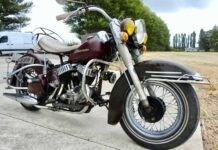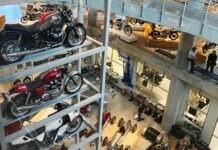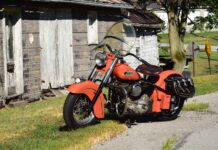A southwestern Colorado motorcycle ride had been a long time in coming. Years earlier, I had driven a loop around the state by automobile, and I promised myself that I’d come back on a motorcycle to visit the spectacular roads in the area. I chose Montrose as my riding hub because of its center‑west location in Colorado.

A spectacular week began when I rode from Provo, Utah, to Montrose on an Indian Challenger loaned to me for evaluation. On the first day, I bypassed the interstate for the scenic route on State Route 191 through the high desert of eastern Utah before heading east on State Route 46, ascending into the cooler and greener climes of Uncompahgre National Forest and through the San Juan Mountains.
Related: Harley-Davidson Road Glide vs. Indian Challenger
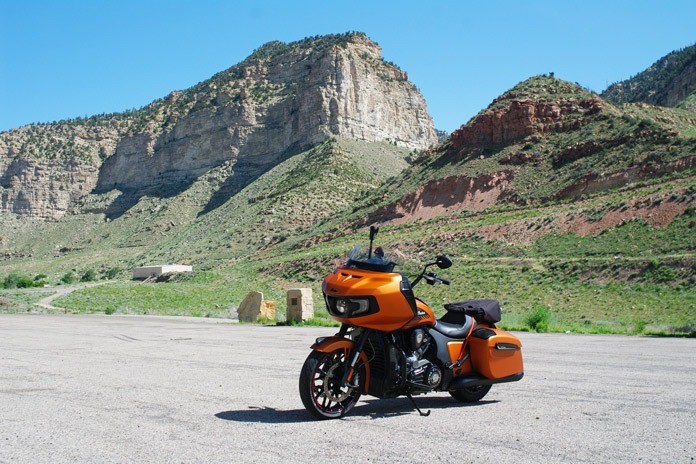
At the Colorado state line, the road becomes State Highway 90, leading to State Highway 62 and ending at U.S. Highway 550 in Ridgway. Another 27 miles north brought me to Montrose, an ideal location for exploring some of the best riding roads in the country.
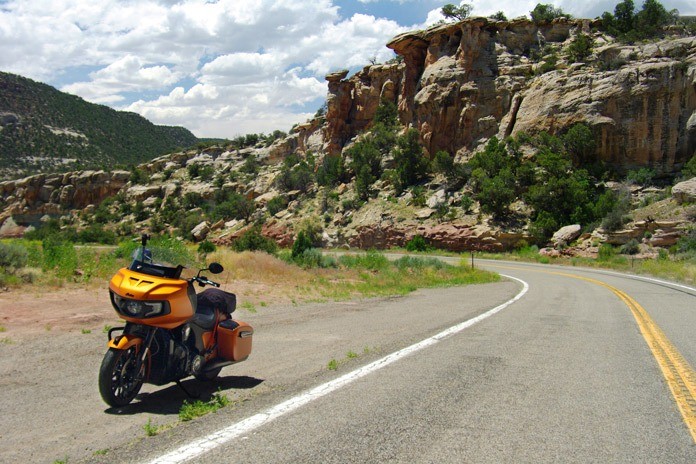
A Million Bucks
The next day, I set course for the Million Dollar Highway, one of Colorado’s premier roads that’s long been on my bucket list. My ride was even better than expected, with deep mountain‑blue skies and cotton‑like cumulus clouds floating from horizon to horizon. The scenery was so magnificent that I often found myself laughing out loud at the sheer beauty of what my eyes were seeing.

I rode south nonstop from Ridgway to Silverton, enjoying an uninterrupted two‑plus hours on the bike. Two sections of the highway (midway between Ouray and Silverton and south of Silverton) are particularly challenging, with the road twisting back on itself several times in the space of a few miles, first ascending and later descending.

I made a stop in Durango for lunch at the Balcony Bar and Grille overlooking Main Street. The town was crowded with people celebrating the July 4th holiday weekend. While I strolled on the street to take a few photos, an automated machine playfully launched soap bubbles into the air.
I enjoyed the Million Dollar Highway so much that I rode it in reverse on the way back to Montrose, which concluded a perfect riding day in a week filled with them.
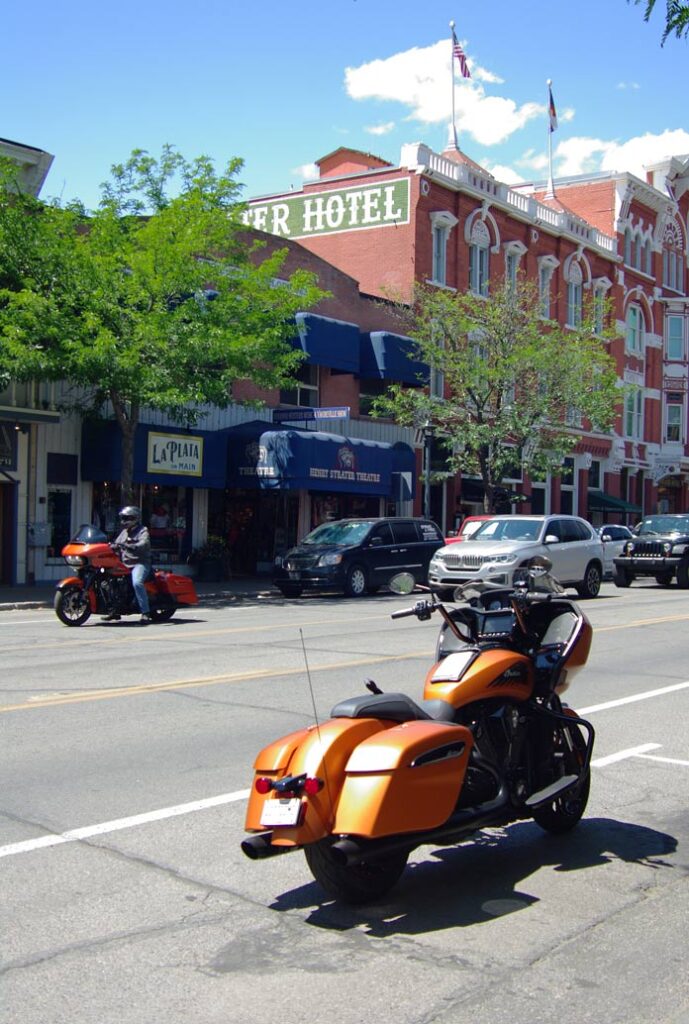
Black Canyon of the Gunnison
The Black Canyon of the Gunnison and Blue Mesa are both close enough to Montrose for a day’s loop ride. From Montrose, heading east on U.S. Highway 50 leads to State Highway 347, the road into Black Canyon. On this Sunday morning, I had the lovely road virtually to myself.
Black Canyon is one of the few national parks I had never visited, and it’s an amazing place. South Rim Road goes west along the edge of the canyon, which is formed entirely of an other‑worldly charcoal‑colored volcanic rock. The Gunnison River appears as a fine green line meandering its way through the canyon 2,700 feet below. It’s a unique visual experience, and I have never seen another place like it. Scenic stopping points allow you to walk out to the canyon’s very edge for some amazing views.

Riding back toward the park entrance, I took the easy‑to‑miss turn onto East Portal Road. The road descends into the Gunnison River basin, dropping 2,000 feet in the space of 5 miles, with some sections at a 16% grade and switchbacks all the way down to the river. South Rim Road has spectacular canyon views, while East Portal Road is the spectacular ride.
Exiting the park and returning to U.S. 50, I headed 35 miles east toward Blue Mesa. State Highway 92 makes a left off the highway and over the top of the Blue Mesa Dam, pooling the Gunnison River and creating Lake Fork to the east. SH‑92 is fairly sedate, winding along the edge of the West Elk Mountains, a relaxing ride with valley views on one side and mountain peaks on the other.
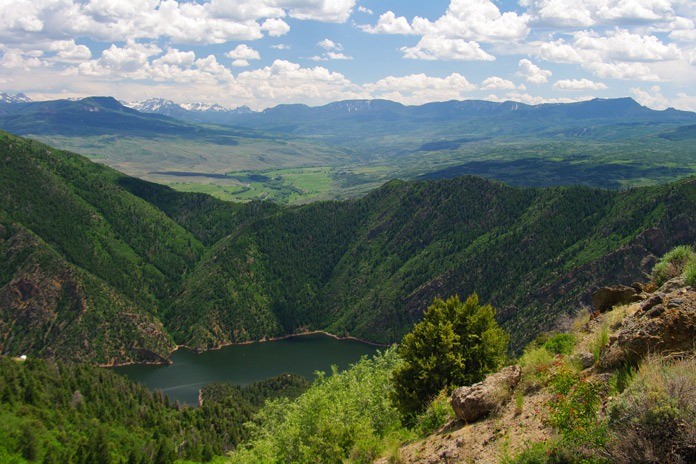
The Mesa Creek area is particularly scenic, with the creek running in a deep valley parallel to the road. SH‑92 continues through the Uncompahgre and Gunnison National Forests, eventually exiting into the high desert approaching the towns of Crawford and Hotchkiss before returning to U.S. 50 at Delta, then south for the ride back to home base.
Grand Mesa
My next journey was a 265‑mile loop that included the Grand Mesa and Elk Scenic Byways. From Delta via U.S. 50, State Highway 65 heads north through the open country of Orchard City and Cedaredge before reaching the 11,000‑foot Grand Mesa plateau, the largest flat‑top mountain in the world.
The 62‑mile Grand Mesa Scenic Byway runs along the western edge of the plateau, allowing 100‑mile views into western plains and valleys and nice sections of twisties to elevate an already atmospheric ride. Fill up before starting on the byway – gas stations are far apart in this wide‑open unspoiled area.

Coming down off the plateau from forest to desert, I experienced temperatures that rose from 65 to 95 degrees in the space of just 25 miles. At De Beque, I started my longest interstate ride of the week: 56 miles on Interstate 70 to Glenwood Springs. Exiting south on State Highway 82, I was impressed by the beautiful and well‑kept town.
My second scenic byway for the day started in Carbondale, where State Highway 133 (the aptly titled Elk Scenic Byway) began another spectacular high‑country ride through the Elk Mountains. The byway’s website states that it’s “the closest you can come to a wilderness experience in a passenger car.” It’s an even better experience on a motorcycle!
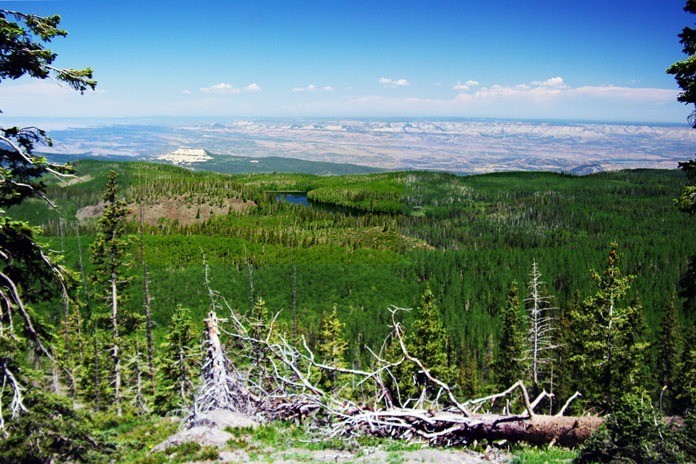
Continuing to Somerset, the byway is surrounded by mountains and national forests, then past the historic arts community of Redstone and through the McClure Pass for 50 virtually uninterrupted miles. At Somerset – out of the mountains and into the high desert again – the late afternoon sun was my cue to head home after a long day on the bike.
The San Juan Skyway
The longest ride of the week was a round‑trip from Montrose to Mesa Verde National Park. I departed Montrose early in the morning to ensure that I would not be riding after nightfall when the deer and the antelope play. The trek took about three hours and began on U.S. 550, followed by SH‑62 at Ridgway and then State Highway 145 at Placerville, where the ascent from the high‑desert plateau begins.
My first and only hiccup for the day came at Telluride, where signs at a traffic circle confused me and caused an unexpected detour. As I returned to SH‑145, the topography slowly transitioned from the yellows, oranges, and browns of high desert to deep blue sky and green pines and aspens.
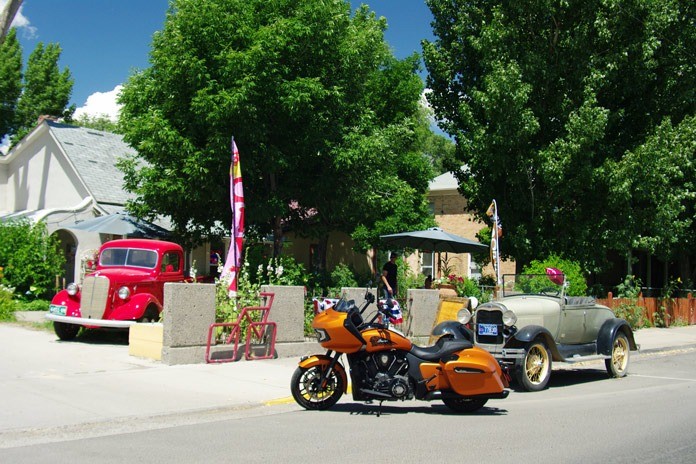
The San Juan Skyway (aka SH‑145) rises to 10,000 feet in elevation and is flanked by slate‑gray 14,000‑foot mountain peaks topped by pure white snow jutting above the tree line. It is a spectacular ride in rarified air, with emerald‑green firs and conifers lining the highway.
Even in the first week of July, temps at elevation were in the mid‑60s, which was comfortable with the Challenger’s adjustable windscreen set just below my line of sight. SH‑145 continues for 86 miles before “coming down to earth” at the town of Cortez, west of Mesa Verde National Park.

I expected to be dodging vacationing sightseers and passing RVs, but the roads were surprisingly traffic‑free. The ride on the San Juan Skyway was no exception: beautiful, uncrowded, unstressed, perfect. Long mountain sweepers occasionally gave way to tight twisties, adding entertainment to the ride.
On these roads, the Challenger was impressive. It is a full‑sized touring bagger that handles like a dream. The seat is firm but comfortable, with seating and controls that don’t strain any part of the anatomy. The bike’s wheelbase is shorter than most touring bikes, with chassis geometry that encourages spirited cornering.
Clutch pull is easier than other Indians I had ridden, and the gears are perfectly spaced for the powerband of the engine. The throttle twitchiness I experienced on previous Indians is completely sorted out on this bike. Throttle and clutch engagement are smooth and predictable, and the bike felt completely intuitive. This is a motorcycle I would own.

As the road began to descend out of the stratosphere, small communities and towns and a large operating coal mine were interesting mile markers. The ambient temperatures had climbed steadily from the mid‑60s in the peaks to mid‑90s in the valleys. Granite gray and green gave way to yellow, orange, brown, and desert scrub. SH‑145 ends at State Highway 160, and a few miles east brings the turnoff into Mesa Verde National Park.
Mesa Verde National Park
Time travel is a concept used in some of the best science fiction stories, books, and movies, but an opportunity to step back in time is something most would not consider a real possibility. However, there are a few magical places in the world where one can get as close as humanly possible to visiting the ancient past. Historians estimate that the Pueblo (Anasazi) Indians moved into this area around 550 A.D. and occupied this location for approximately 800 years.

National parks offer free entry to U.S. military veterans. The ranger at the Mesa Verde entrance handed me a clipboard, said, “Sign here,” and then gave me a lifetime pass. During our brief conversation, he informed me that the ride to the Mesa Verde summit takes almost an hour.
Due to the unintended detour into Telluride, I arrived at the park at 1 p.m., an hour later than planned. Two hours to the top and back with stops at the summit would put my departure time back to Montrose after 4 p.m. Despite the long summer days, I had to keep an eye on my time in the park.
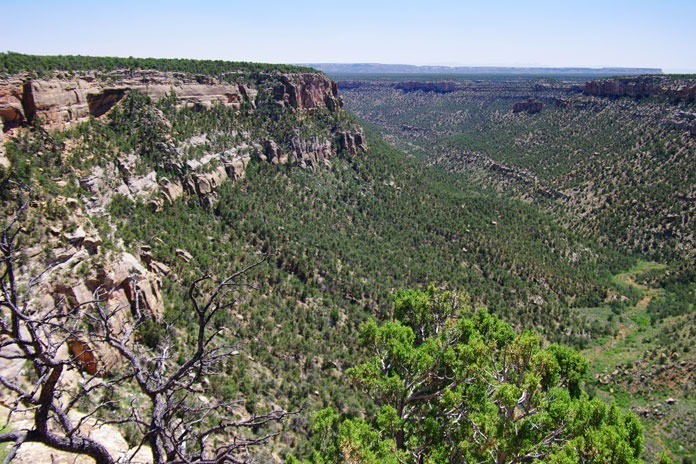
Once on the long and winding road to the Mesa Verde summit, I put thoughts of the limited daylight aside. The ride to the summit was simply amazing, with the road offering expansive views in every direction, revealing vistas of flat plateaus, distant desert strata, and snow‑covered mountain peaks tinted blue by the afternoon haze.
The twisty roads were well‑maintained and perfectly paved all the way up. Stops for photos included most of the scenic overlooks, as well as the highest point in Mesa Verde National Park, the Park Point Fire Lookout, at nearly 8,600 feet elevation.
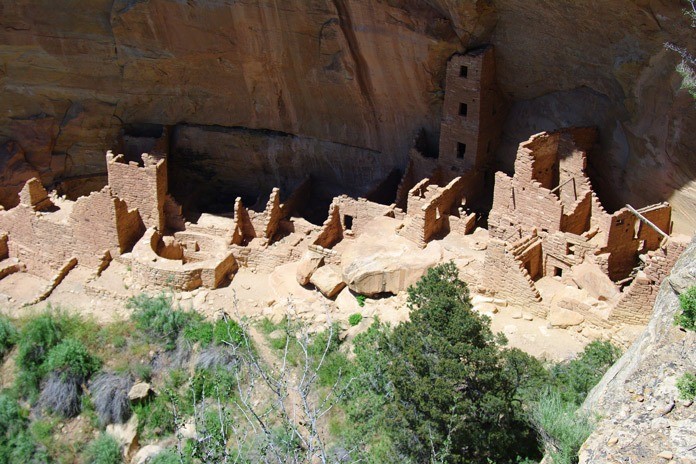
Mesa Verde is a fantastic place, and it strains the imagination to comprehend that generations of people flourished here for centuries. Sometime around 1300, the Anasazi abandoned the site, presumably due to drought. Their cliff‑dwelling homes and ceremonial places remained forgotten and forlorn until their rediscovery in 1889 by the Wetherill brothers, local ranchers searching for their lost cattle. In 1906, Theodore Roosevelt made Mesa Verde a national park.
Walking through living areas carved into rock that inhabit an entire mountainside, viewing the ceremonial areas, and stepping down on wood ladders into ancient underground living quarters was a surreal experience. It’s difficult to wrap your mind around the fact that people lived here more than 1,000 years ago.
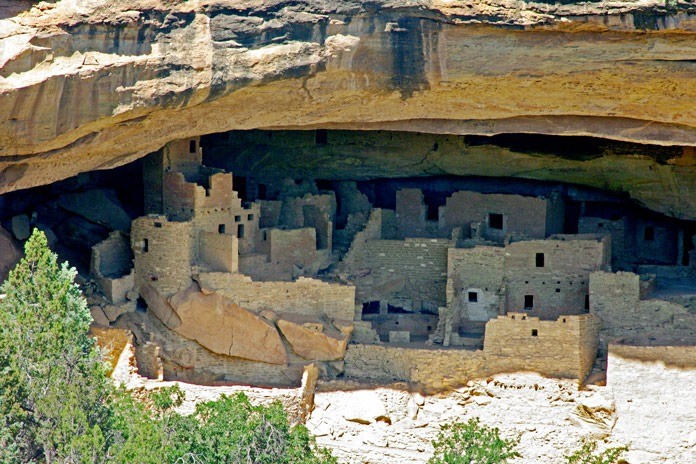
Try to absorb that span of time: the lives of 50 generations of human beings mingled with the soil, the millennia of families, kinships, and experiences. Handprints of an Anasazi citizen are preserved in petroglyphs carved into the rocks, someone who likely had all the triumphs and tragedies of any human life. It boggles the mind.
Leaving the park and winding back to high and dry desert, it was time for the ride back to Montrose. The angled late‑afternoon sun put the return ride in a different light. Golden colors and long shadows deepened the quality of the beautiful ride on SH‑145. At Telluride, I paid more attention at the roundabout and stayed on SH‑62 to Ridgway, and I was back in Montrose just as the sun was dropping below the horizon.

It was my final ride of the July 4th holiday week. I had ridden nearly 2,000 miles aboard the Indian Challenger, which was completely up to the challenge. The nine days of touring southwestern Colorado included some of the best riding I have ever experienced.
Places to Visit on Colorado Motorcycle Ride
- Black Canyon of the Gunnison National Park: 10346 SH-347, Montrose, CO
- Ute Museum: 17253 Chipeta Rd, Montrose, CO
- Museum of the Mountain West: 68169 Miami Rd, Montrose, CO
Places to Eat on Colorado Motorcycle Ride
- DoubleBarrel Taco: 347 E. Main St., Montrose, CO
- Colorado Boy Pizza & Brewery: 320 E. Main St., Montrose, CO
- Camp Robber: 1515 Ogden Rd., Montrose, CO
- Pahgre’s Italian: 1541 Oxbow Dr., Montrose, CO
- Ted Nelson’s Steakhouse: 103 Rose Ln., Montrose, CO
Brewery / Distillery / Winery on Colorado Motorcycle Ride
- Pomona Brewery: 830 N Townsend Ave., Montrose, CO
- Horsefly Brewery: 846 E Main St., Montrose, CO
- Storm King Distillery: 41 W Main St., Montrose, CO
- LaNoue DuBois Winery: 67289 Trout Rd., Montrose, CO
Places to Stay on Colorado Motorcycle Ride
- Holiday Inn & Suites: 1391 S Townsend Ave, Montrose, CO
- Hampton Inn: 1980 N Townsend Ave, Montrose, CO



